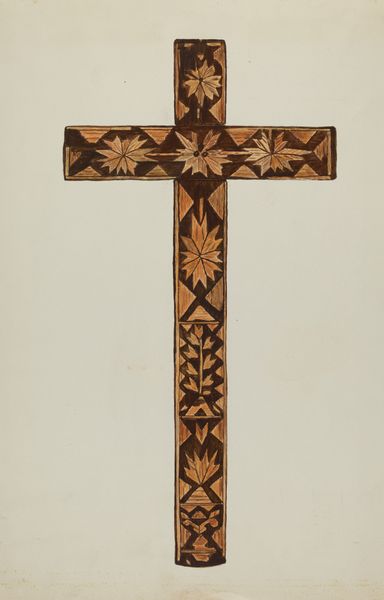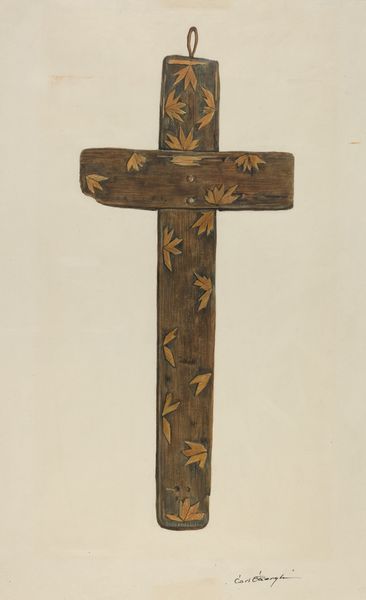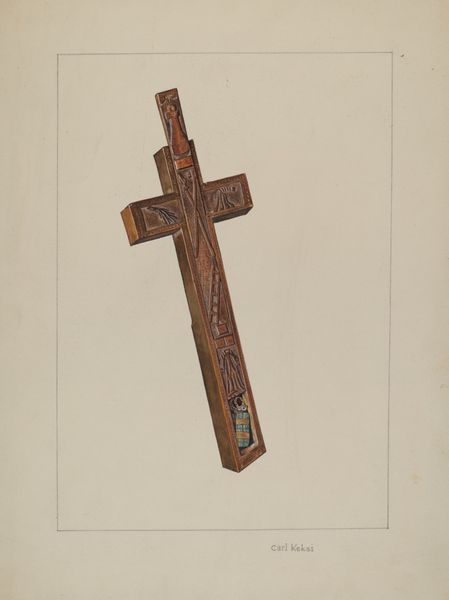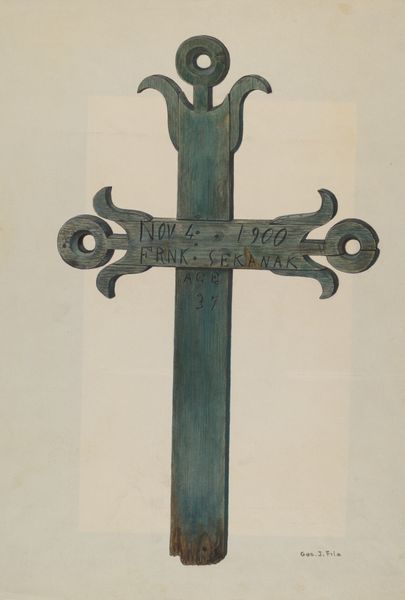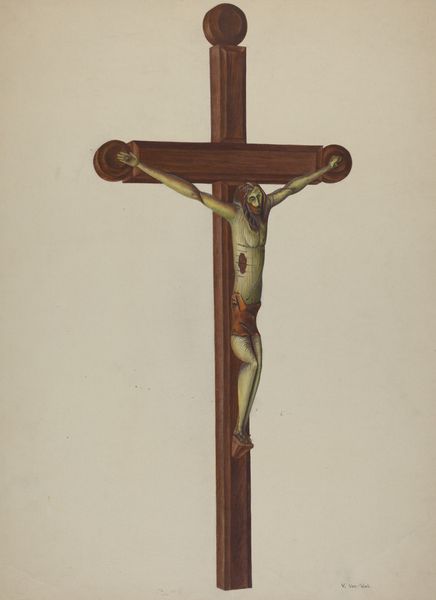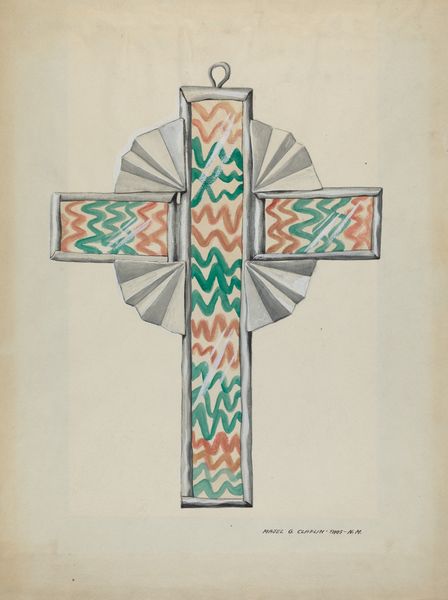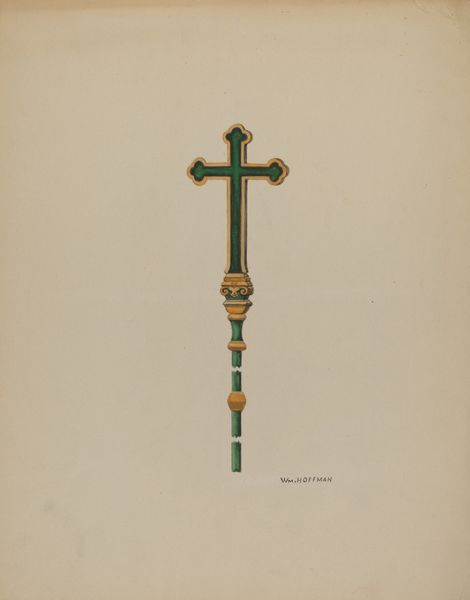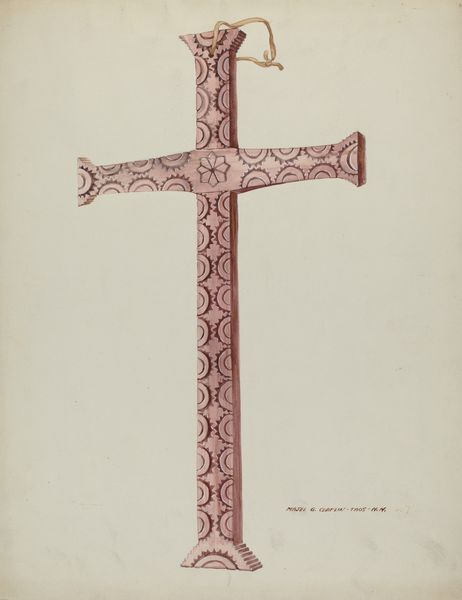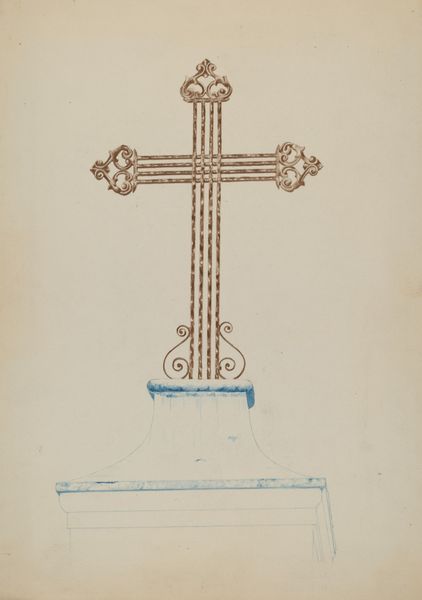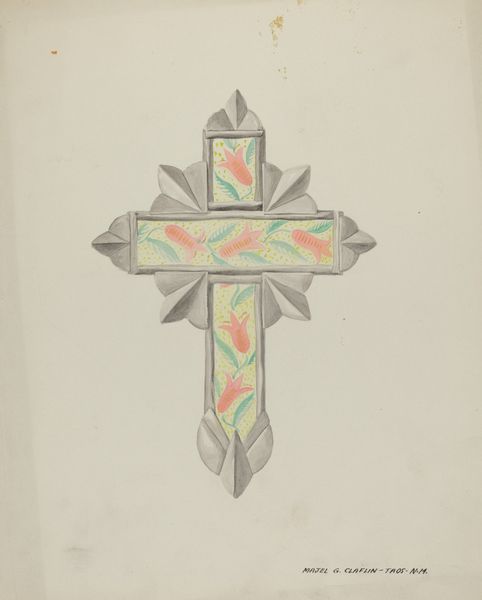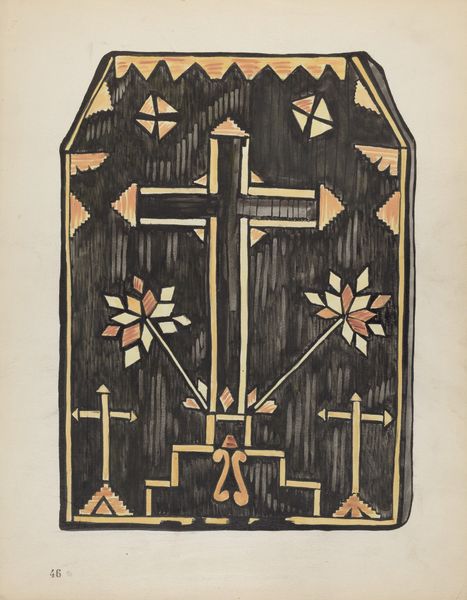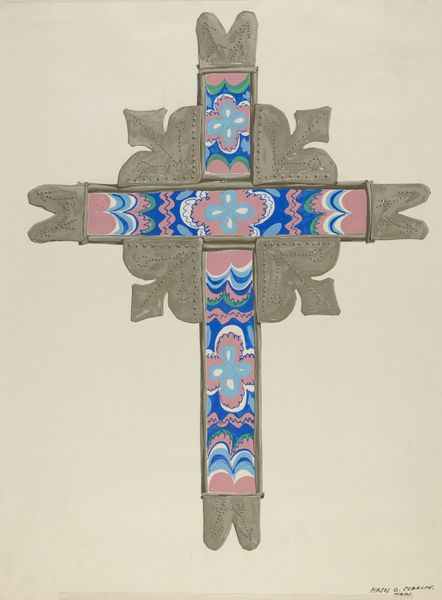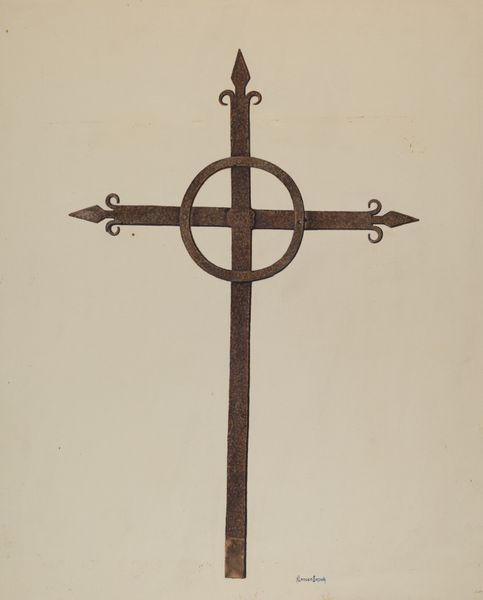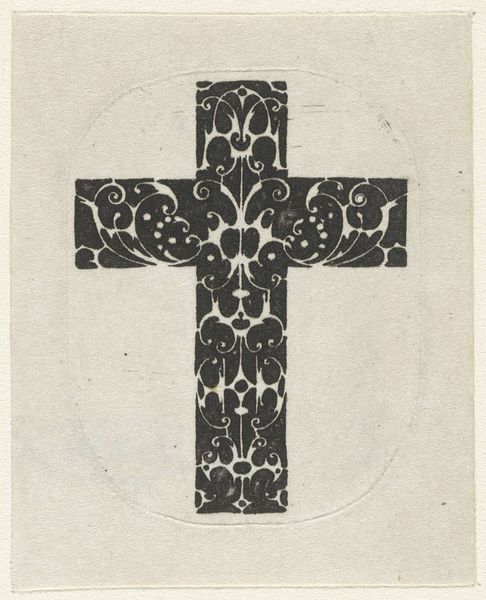
drawing, wood, charcoal
#
drawing
#
sculpture
#
charcoal drawing
#
form
#
geometric
#
wood
#
charcoal
#
charcoal
Dimensions: overall: 50 x 36.4 cm (19 11/16 x 14 5/16 in.) Original IAD Object: 15"long; 6"wide
Copyright: National Gallery of Art: CC0 1.0
Editor: Here we have Carl O'Bergh's "Cross," dating from around 1939. It's a charcoal and colored pencil drawing on paper, presenting what looks like a wooden cross. I'm struck by the detail in the geometric patterns embellishing it. How do you interpret this work purely from a visual perspective? Curator: The form itself immediately suggests the essence of the piece. Notice how the artist uses repeated geometric motifs, almost like an indigenous textile pattern, to adorn the surface of the cross. It invites a semiotic analysis. What do these repetitions communicate beyond simple decoration? Editor: Perhaps a sense of ritual or tradition? It definitely moves past the basic symbolism of the cross itself. Curator: Precisely. The horizontal and vertical lines of the cross are visually interrupted by these patterns, almost fragmenting the inherent symbolism. In terms of structure, the application of color, a warm tan set against the dark charcoal, enhances the depth and the tactile sense. Do you perceive a tension in the use of such primitive markings applied to a Christian symbol? Editor: Definitely. It’s as if O'Bergh is trying to merge cultural signifiers into one form, but through the geometric vocabulary and rendering the cross takes on almost an abstracted tribal object. Curator: And abstraction leads us to question the artist's intent. It’s important to note how form takes precedence over iconographic content. He has clearly deconstructed a religious symbol, offering an alternative visual interpretation rooted in design rather than direct religious sentiment. A challenge to our perception of signs. Editor: So by focusing on line, shape, and pattern, O'Bergh creates a cross that is about design, rather than solely about its conventional symbolism. It highlights form and visual experience first and foremost. Curator: Yes, and by engaging with its purely aesthetic components, we're challenged to redefine our understanding of visual communication in its most fundamental guise. Thank you for your insights, Editor. It has been insightful exploring this artwork together through the lens of form and design.
Comments
No comments
Be the first to comment and join the conversation on the ultimate creative platform.
